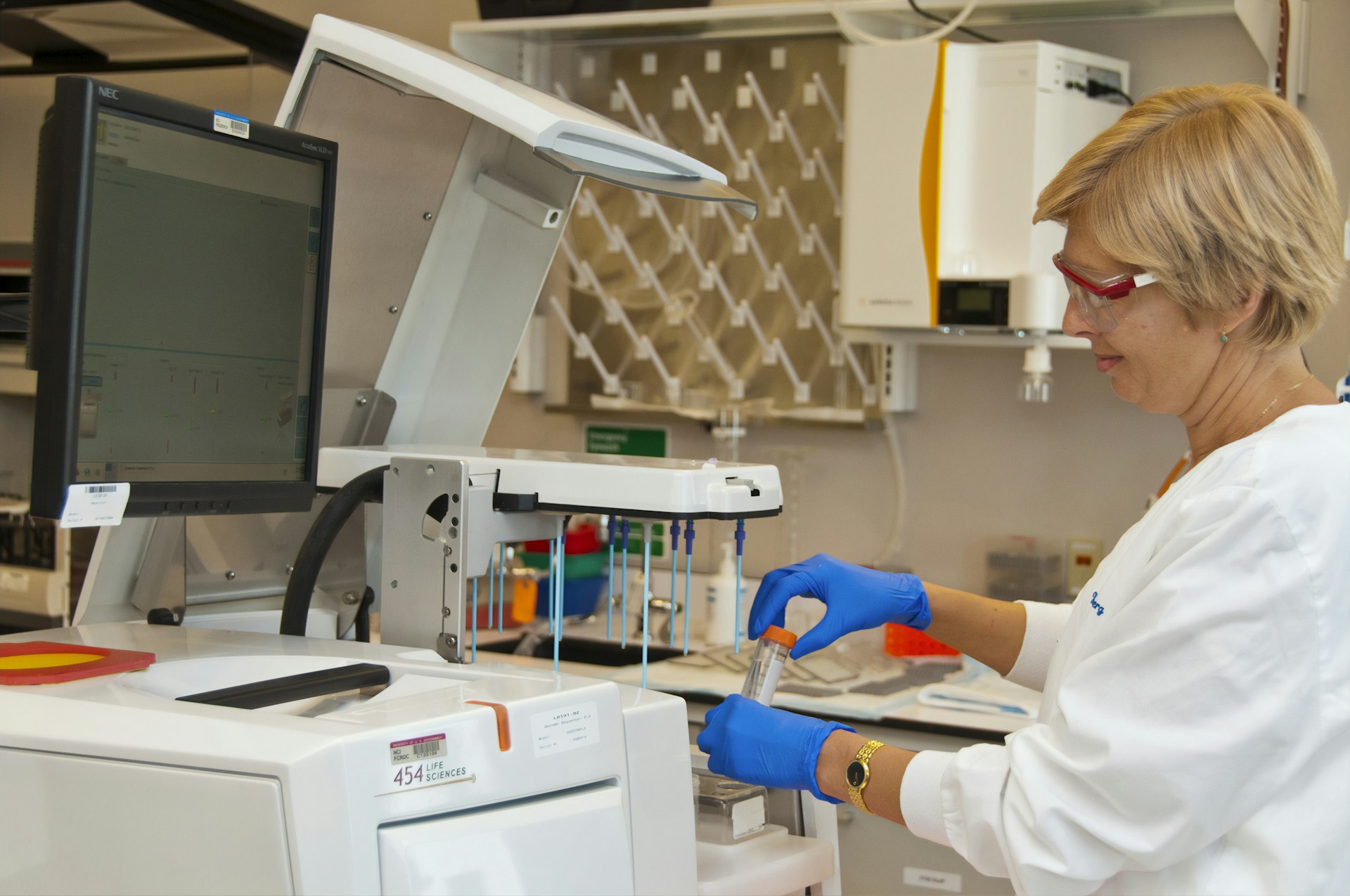The Future of Stem Cell Therapy: Transforming Joint Repair and Regeneration

Photo by Susan Wilkinson on Unsplash
Introduction: The Next Frontier in Joint Repair
Stem cell therapy is rapidly redefining how doctors and patients approach joint repair. As of 2025, this field has moved beyond promise into real-world application, providing alternatives to traditional joint surgery and pain management [3] . With continuous advances in regenerative medicine, stem cell therapies now offer the potential to not only ease symptoms, but also restore function and delay or prevent the need for joint replacement [4] . This article explores the state of the art, recent breakthroughs, and actionable steps for those seeking to benefit from these cutting-edge treatments.
How Stem Cell Therapy Works for Joint Repair
Stem cells possess a unique ability to transform into specialized cell types, including cartilage, bone, and connective tissue. In joint repair, the most commonly used are mesenchymal stem cells (MSCs) , typically sourced from bone marrow or adipose (fat) tissue. These cells can be injected into damaged joints, where they help to reduce inflammation, stimulate tissue repair, and potentially regenerate cartilage that has worn away due to injury or degenerative disease such as osteoarthritis [2] .
Unlike traditional treatments that focus on symptom management or surgical replacement, stem cell therapy aims to address the root cause by rebuilding tissue. This approach may result in improved mobility, decreased pain, and a better quality of life for many patients [5] .
Recent Advances and Breakthroughs in 2025
The field of cell-based therapy has seen significant progress in the last few years. Researchers have refined techniques for isolating, expanding, and delivering stem cells to maximize their therapeutic effect. Notably, recent clinical trials have shown that targeted delivery of MSCs to specific areas within the joint, such as bone marrow lesions, can delay or even prevent the need for total knee replacement by over a decade for some patients [4] .
Other innovations include the use of engineered cells, tissue scaffolds, and combination therapies that pair stem cells with growth factors to enhance healing. These developments are making treatments more precise and personalized. In addition, there are ongoing studies into lab-grown cartilage and tissue patches seeded with stem cells, which could further improve outcomes for patients with severe joint damage [1] .
Real-World Applications: Who Can Benefit?
Stem cell therapy for joint repair is most commonly used to treat osteoarthritis, cartilage injuries, and certain ligament or tendon problems . Patients who have not responded well to conventional therapies, or who wish to avoid or delay surgery, may be good candidates [3] . The therapy is also being explored for use in younger, active individuals who want to return to sports or high-level physical activity without the risks associated with joint replacement surgery.
While outcomes can vary, many patients report reduced pain, improved mobility, and a return to normal activities after treatment. However, it is important for potential candidates to consult with a qualified medical professional to determine if stem cell therapy is appropriate for their specific condition.
Step-by-Step: Accessing Stem Cell Therapy for Joint Repair
If you are considering stem cell therapy for joint repair, here are detailed steps to guide you:
- Consult Your Physician: Start by discussing your condition and treatment goals with your primary doctor or orthopedic specialist. They can help determine if you are a good candidate or if further evaluation is needed.
- Research Qualified Providers: Look for clinics or medical centers that are accredited and have experience in administering stem cell therapies for musculoskeletal conditions. You can search for providers affiliated with major academic medical centers, or consult with your state medical board for lists of licensed practitioners.
- Verify Clinical Trial Opportunities: Since stem cell therapies are still evolving, some treatments may only be available through clinical research studies. To explore these options, visit the official website of the National Institutes of Health (NIH) and use the ClinicalTrials.gov database to search for ongoing or upcoming studies on stem cell therapy for joint repair.
- Understand the Risks and Benefits: Ask your provider about the evidence supporting the therapy, expected outcomes, potential risks, and costs involved. Be aware that insurance coverage for stem cell treatments may be limited, as some procedures are considered investigational.
- Prepare for the Procedure: If you choose to proceed, your provider will explain the preparation, procedure, and aftercare. Most stem cell therapies for joints are minimally invasive and performed on an outpatient basis, but recovery protocols may vary.
What to Expect: Results, Challenges, and Limitations
While many patients experience significant relief and improved function, stem cell therapy is not a guaranteed cure for all joint problems. Clinical studies have shown promising results, especially in early to moderate osteoarthritis, but the degree and duration of benefit can vary [4] .
Potential challenges include:
- Variability in patient response to therapy
- Limited long-term data for some newer techniques
- Possible need for repeat treatments
- Uncertainty regarding insurance coverage
- Risk of complications such as infection or ineffective treatment
Nevertheless, ongoing research and improved protocols are steadily addressing these issues, making stem cell therapy an increasingly viable option for many.
Alternatives and Complementary Approaches
Stem cell therapy is part of a broader movement in regenerative medicine that includes platelet-rich plasma (PRP) injections, hyaluronic acid injections, and minimally invasive surgical techniques. For some patients, a combination of therapies may provide the best results. Others may still require traditional surgery, especially in cases of severe joint destruction. It is important to explore all available options with your healthcare provider to find the most effective approach for your needs.
Staying Informed: Research and Updates
The science of stem cell therapy is evolving quickly. To stay informed about the latest advancements, consider:
- Following updates from reputable medical organizations, such as the American Academy of Orthopaedic Surgeons (AAOS) and the National Institutes of Health (NIH).
- Consulting peer-reviewed journals and trusted health news outlets for new clinical trial results and expert perspectives.
- Asking your provider about ongoing research or registries that track patient outcomes from stem cell therapies.
Guidance for Finding Stem Cell Therapy Providers
To locate credible providers or clinical trials near you:

Photo by Gary Walker-Jones on Unsplash
- Search the official ClinicalTrials.gov database maintained by the National Institutes of Health for clinical research opportunities in stem cell therapy for joint repair.
- Contact your state medical board for lists of licensed regenerative medicine clinics.
- Consult major academic medical centers, which often have regenerative medicine programs or can provide referrals.
- Request a second opinion from a board-certified orthopedic specialist before making any treatment decisions.
Be cautious of unverified claims or clinics that promise guaranteed results or offer therapies not supported by clinical evidence. Always verify credentials and ask about the regulatory status of any treatment being offered.
Key Takeaways and Looking Ahead
Stem cell therapy is poised to dramatically change the landscape of joint repair. While not a universal solution, it offers real hope for patients seeking less invasive, more effective treatments for joint pain and degeneration. With continued research, improved technology, and increased clinical experience, these therapies could soon become a mainstream option for millions worldwide. Patients and providers alike should remain informed, ask critical questions, and pursue evidence-based care as this exciting field continues to evolve.
References
- [1] Gladiator Therapeutics (2025). Stem cell muscle repair: Top 5 Breakthroughs in 2025.
- [2] Cellebration Wellness (2025). What Conditions Can Stem Cell Therapy Actually Treat in 2025?
- [3] Stem Cell of NJ (2025). 10 Best Stem Cell Therapy NJ Treatments in 2025: Revolutionizing Healthcare.
- [4] Frontiers in Immunology (2025). Advances in cell therapy for orthopedic diseases: bridging immune system and tissue regeneration.
- [5] DVC Stem (2025). Cell Regeneration Therapy: Advancements & Limitations (2025).
MORE FROM cheerdeal.com













